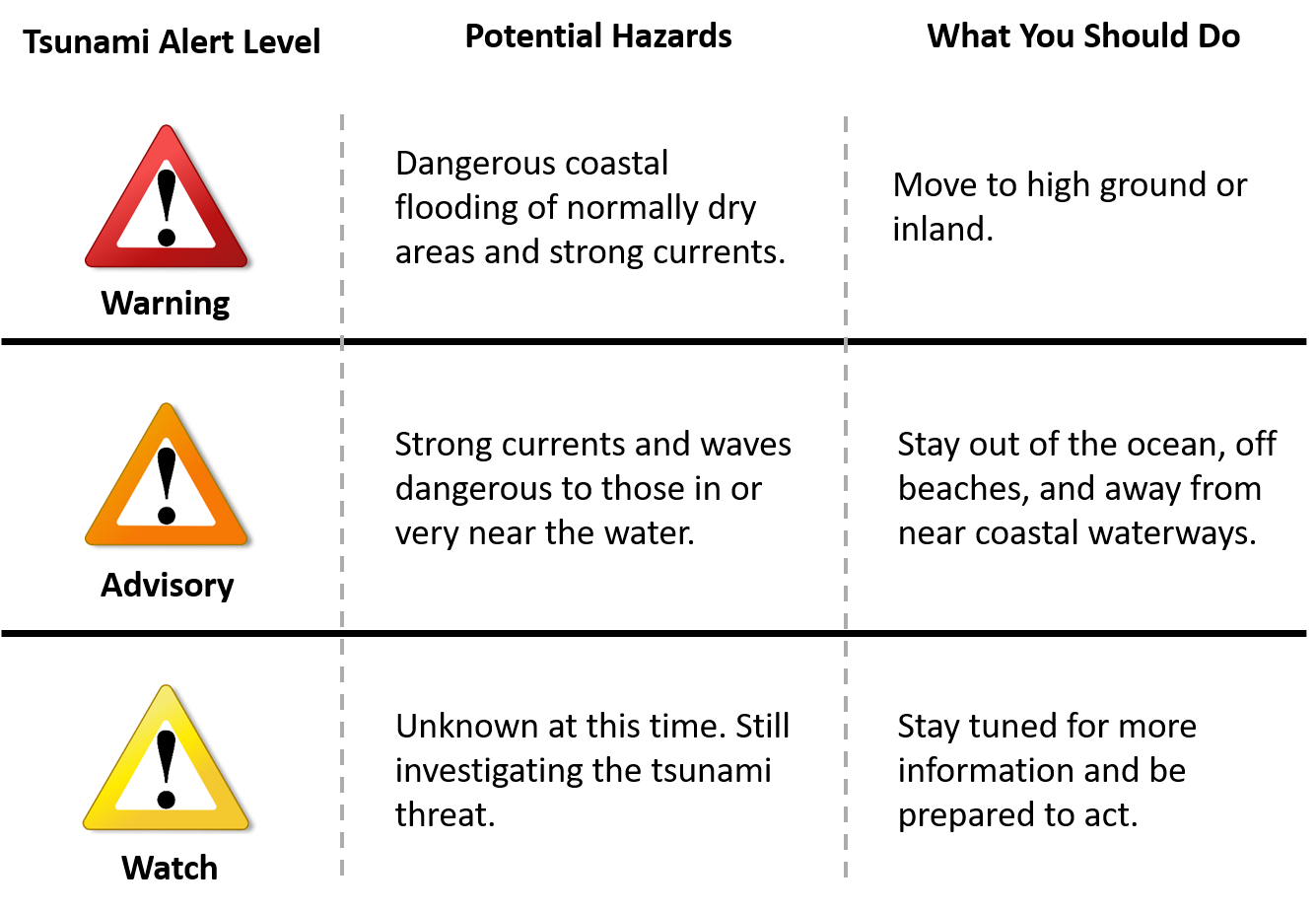Official Tsunami Warnings
Tsunami warning systems detect earthquakes large enough to cause a tsunami and send warning bulletins before the waves arrive so that local authorities can evacuate vulnerable populations.
The United States operates two tsunami warning centers, the Pacific Tsunami Warning Center in Hawaii covers Hawaii, the U.S. Pacific territories, and provides guidance to many other counties. The National Tsunami Warning Center has the responsibility of warning Canada and the rest of the United States, including California.
Official tsunami warnings are most effective when the tsunami source is more than 1,000 miles away, such as Alaska, Japan, or Chile. If the earthquake is located on a local fault, such as the Cascadia Subduction Zone, there is too little time for the National Tsunami Warning Center to get a warning to you. Ground shaking that lasts for a long time or other natural warning signs will be your only warning during an earthquake you feel. Know what areas are hazardous and immediately head to high ground or away from the coast in these situations.
Based on earthquake size and location, the National Tsunami Warning Center will issue alerts corresponding to the relative tsunami threat:

More details


